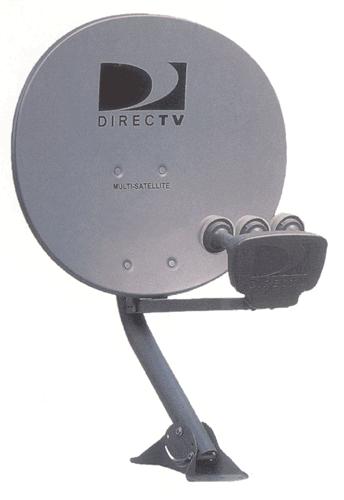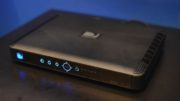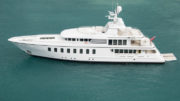Our tech support department is often asked what dish is needed for DIRECTV service. DIRECTV has had many dishes through the years, but today, only the Slimline series will work with DIRECTV’s HD channels.
Slimline-3

The Slimline-3 is DIRECTV’s go-to dish for markets where all your local channels come from one of DIRECTV’s three main satellites locations at 99, 101, and 103 degrees. This is most of the US. The easiest way to know if you can use a Slimline-3 dish is to look at other DIRECTV dishes you see around town. Look at the LNB (the front part.) Is it shaped sort of like a closed fist, like the picture you see above? If so, you need the Slimline-3. You can also consult our online guide to see if you can use the Slimline-3. It’s less expensive and easier to aim.
Slimline-5

The Slimline-5 is the dish to use if you think you’ll need to see all five satellite locations, or even if you’re not sure. It’s DIRECTV’s all-purpose HD dish and picks up all the English-language programming that DIRECTV provides.
Should you get built-in SWM?
Many of DIRECTV’s dishes come with a built-in SWM. SWM is the technology that lets you use inexpensive splitters anywhere down the line instead of running 2 lines to the dish for every DVR. If you plan on having just a few receivers, go for the built-in SWM on the dish. Otherwise, you can use an external SWM multiswitch to add the same function to the “regular” dish.
What about the older DIRECTV HD Dish?

Back in the early 2000’s, DIRECTV used the Phase III Dish for HD service. If you look closely, the reflector (the back part) isn’t as wide as the Slimline dish. That dish is still sold, but it won’t work for HD service. Why? The Phase III dish will only see the 101, 110, and 119 satellite locations. At the time this dish was installed, that’s where the HD was, but today, it’s all moved from the 110 and 119 locations to the 99 and 103 locations. This change was made for a lot of reasons: DIRECTV could put bigger satellites in those other locations, and they are more centrally located so people in different parts of the country can get better service.
If you have the older dish, you can easily upgrade to the newer one. You can’t just upgrade the front, though… you need to upgrade the whole dish.





